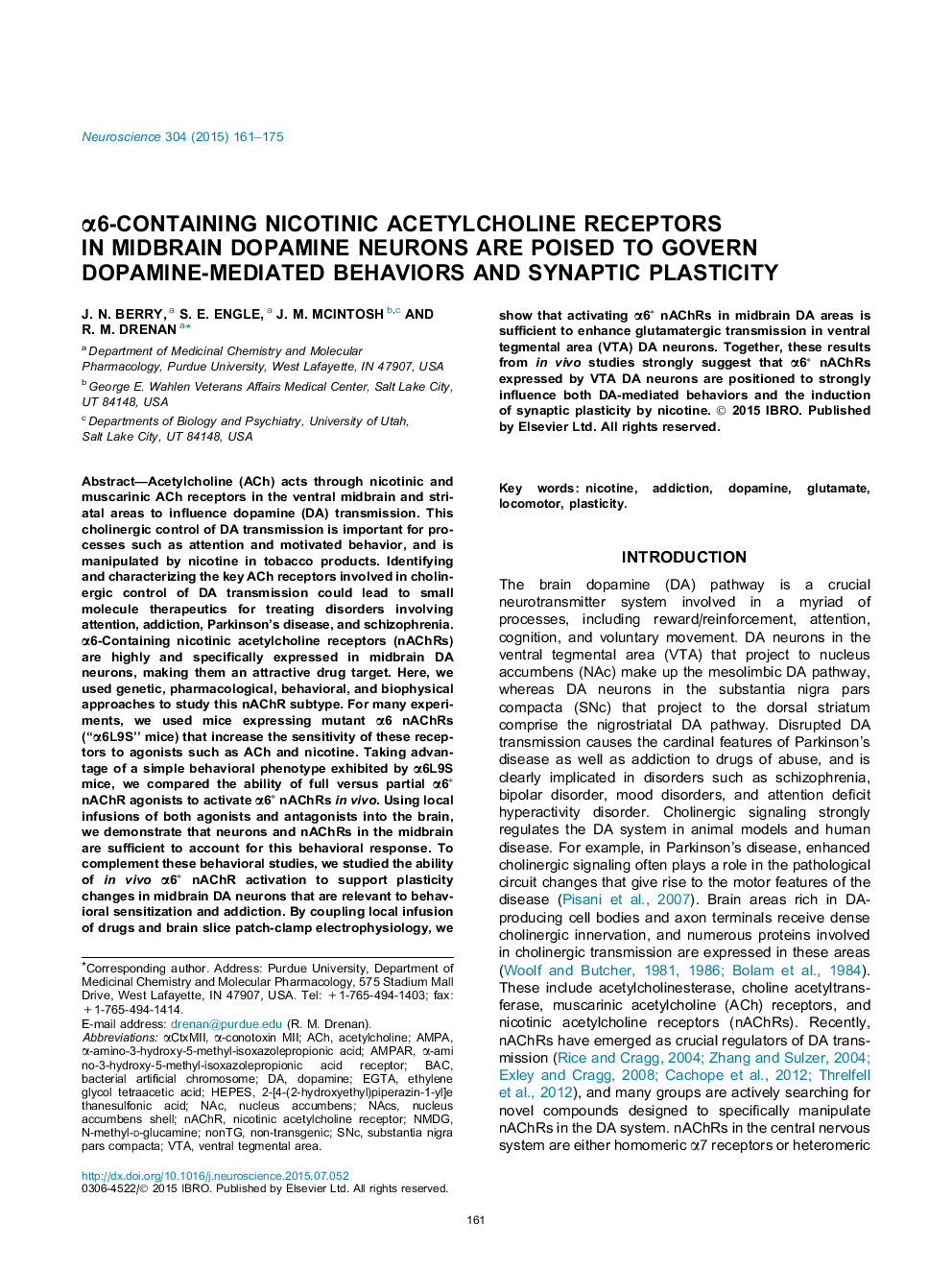| Article ID | Journal | Published Year | Pages | File Type |
|---|---|---|---|---|
| 6272381 | Neuroscience | 2015 | 15 Pages |
Abstract
Acetylcholine (ACh) acts through nicotinic and muscarinic ACh receptors in the ventral midbrain and striatal areas to influence dopamine (DA) transmission. This cholinergic control of DA transmission is important for processes such as attention and motivated behavior, and is manipulated by nicotine in tobacco products. Identifying and characterizing the key ACh receptors involved in cholinergic control of DA transmission could lead to small molecule therapeutics for treating disorders involving attention, addiction, Parkinson's disease, and schizophrenia. α6-Containing nicotinic acetylcholine receptors (nAChRs) are highly and specifically expressed in midbrain DA neurons, making them an attractive drug target. Here, we used genetic, pharmacological, behavioral, and biophysical approaches to study this nAChR subtype. For many experiments, we used mice expressing mutant α6 nAChRs (“α6L9S” mice) that increase the sensitivity of these receptors to agonists such as ACh and nicotine. Taking advantage of a simple behavioral phenotype exhibited by α6L9S mice, we compared the ability of full versus partial α6â nAChR agonists to activate α6â nAChRs in vivo. Using local infusions of both agonists and antagonists into the brain, we demonstrate that neurons and nAChRs in the midbrain are sufficient to account for this behavioral response. To complement these behavioral studies, we studied the ability of in vivo α6â nAChR activation to support plasticity changes in midbrain DA neurons that are relevant to behavioral sensitization and addiction. By coupling local infusion of drugs and brain slice patch-clamp electrophysiology, we show that activating α6â nAChRs in midbrain DA areas is sufficient to enhance glutamatergic transmission in ventral tegmental area (VTA) DA neurons. Together, these results from in vivo studies strongly suggest that α6â nAChRs expressed by VTA DA neurons are positioned to strongly influence both DA-mediated behaviors and the induction of synaptic plasticity by nicotine.
Keywords
HEPESα-Conotoxin MIILocomotorN-methyl-d-glucamineNMDGVTAAMPARAMPAnAChRNACEGTANACsSNC2-[4-(2-hydroxyethyl)piperazin-1-yl]ethanesulfonic acidBACAChethylene glycol tetraacetic acidAcetylcholineAddictionsubstantia nigra pars compactaDopaminenon-transgenicventral tegmental areaNicotineNucleus accumbensnucleus accumbens shellPlasticitybacterial artificial chromosomeglutamatenicotinic acetylcholine receptor
Related Topics
Life Sciences
Neuroscience
Neuroscience (General)
Authors
J.N. Berry, S.E. Engle, J.M. McIntosh, R.M. Drenan,
